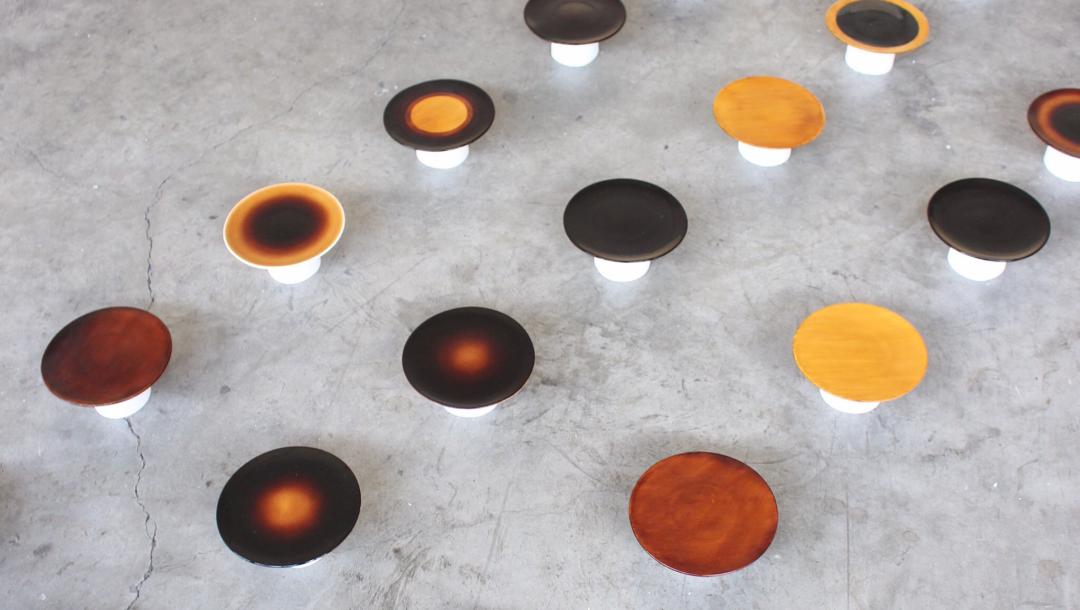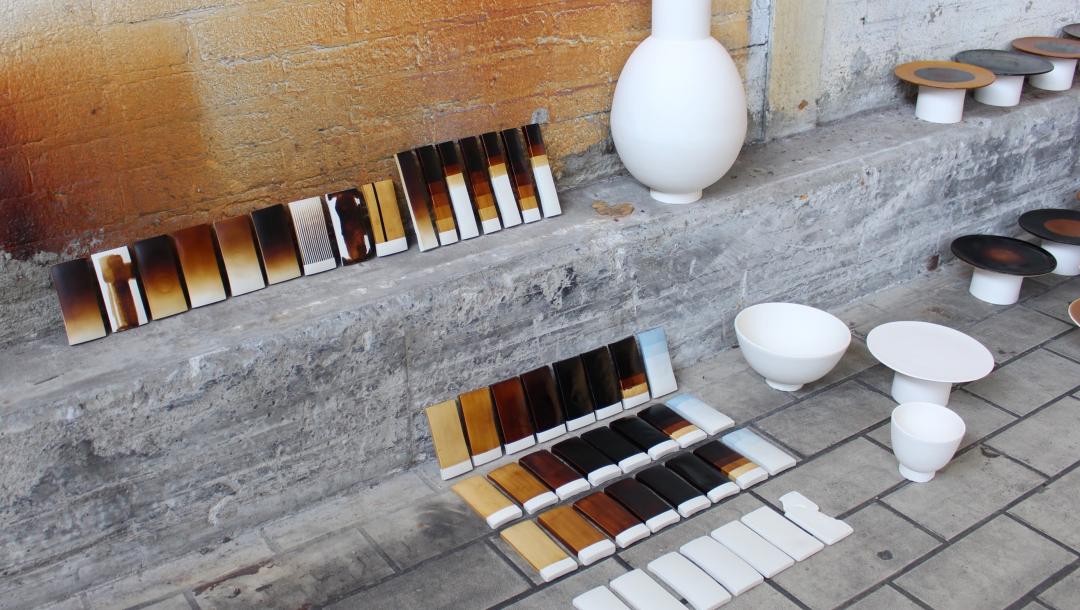The world of design looks to the future. New technologies, new materials, new forms. Yet innovation is often closer to home than you might think. New technologies help to reinterpret old existing materials. Making them relevant again for today and the future. At DDW19 we highlight the group of materials used for millennia: ceramics. Manifested in the trend: Back to Earth.

Artisanal and innovative
While clay is still wet, the texture of the surface can be changed. The sgraffito technique, for example, is one in which the surface is worked by hand with all kinds of tools. Designer Heleen Sintobin employs a contemporary method here: CNC milling. Milling the wet porcelain or clay creates new patterns. They are the machine’s fingerprints as it were, with all its imperfections, characteristic for this method. The CNC milling machine almost becomes part of the craft of ceramics itself. Sintobin presents her project Digi-Terra Collection with three smaller collections in VEEM. Each of these are individually linked to the geographical origin of the clay used.
Traditionally, clay has been poured into moulds or thrown on a wheel. The addition of biomaterial reinforces the clay and it can also be printed. Cindy Valdez uses this method in her project BARROS. She makes a series of ceramic construction elements using a 3D printer. This new technique enables the creation of special and complex shapes. The ceramic bricks can be used indoors and outdoors, building a bridge with architecture.

Natural or industrial?
Clay and sand, more than any other materials, are inextricably linked to the area where they originate. We often associate them with natural areas like riverbeds or quarries, but industry is also a producer of this raw material. In the project Wasteland to Living Room, a group of four designers from the Royal College of Art are researching how 'red mud', a by-product from the aluminium industry, can be used. The result: a series of functional objects such as plates and vases with a distinctive rusty brown colour. Industry today perceives little value in 'red mud', but this project demonstrates that the material has great potential for interior objects and for applications in architecture and construction.

Ceramic innovation and artisanal skills can also work on an industrial scale. At DDW19 we see two iconic companies. The Japanese company Arita shows an experimental collection of porcelain, made in collaboration with Japanese artisans. Eight international designers and artists, including Franciska Meijers, Florence Dwyer and Antye Guenther, will show their prototypes in this exhibition on the Hallenweg. In addition, the Dutch Cor Unum presents their Future/History collection at Plan-B. For 66 years this company in Den Bosch has created cutting-edge collections of domestic ceramics. This year a number of Dutch designers including Kiki van Eijk, David Derksen, Studio Rens, Floris Hovers and Studio Maarten Kolk & Guus Kusters will delve into the history of the company. They seek inspiration and innovation with respect for the craft. These new objects are inspired by history.

Hands-on
In addition to industrial applications, clay, whether artificial or not, is an excellent material to work with your hands. Everyone remembers fashioning things from modelling clay in primary school, don’t they? Designer Diego Faivre plays with this sentiment. He graduated last year with his presentation of Minute Manufacturing, a collection of furniture and objects covered with a special clay that cures when exposed to air. The basic structures are second-hand furniture and waste materials like cardboard or plastic boxes. He then applies a layer of cheerfully coloured clay. The value of the object is determined by the number of minutes the designer took to make it. This is how he attributes value to his manual labour. This year Faivre presents new work as part of the Surplus collective, alongside the designers Willem van Hoof, Pierre Castignola, Tim Teven and Ronald Smits. The three designers take a radical and critical look at existing production processes in this curated exhibition in Sectie-C.
Recycle
Clay can be recycled even after it has been fired. This chamotte clay can be reused providing it is not contaminated. Glazing protects fired clay and waterproofs it. But the glass particles in this glaze contaminate the clay and make reuse very difficult. Designer Seok-hyeon Yoon, who graduated from the Design Academy Eindhoven this year and is featured in the Graduation Show at the Campina site, explores alternative ways of protecting ceramics. He employs Ott, a traditional Korean lacquer. This natural lacquer derived from the Ott tree is used to make wooden utensils water resistant. Ott dries when exposed to air and does not need to be fired. In addition, it has the added special property of evaporating when heated. This allows the recovery of pure clay and completes the circle.














